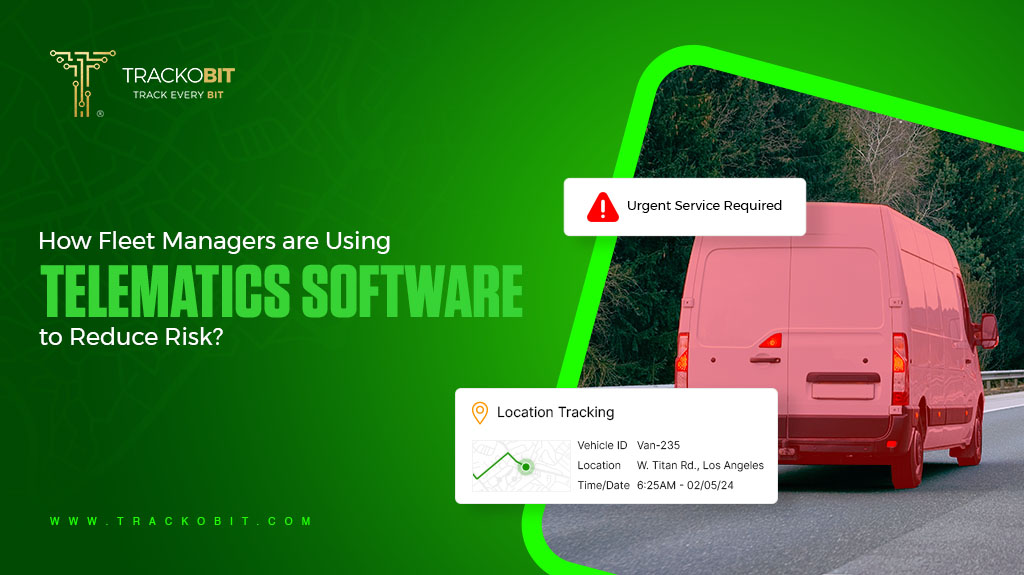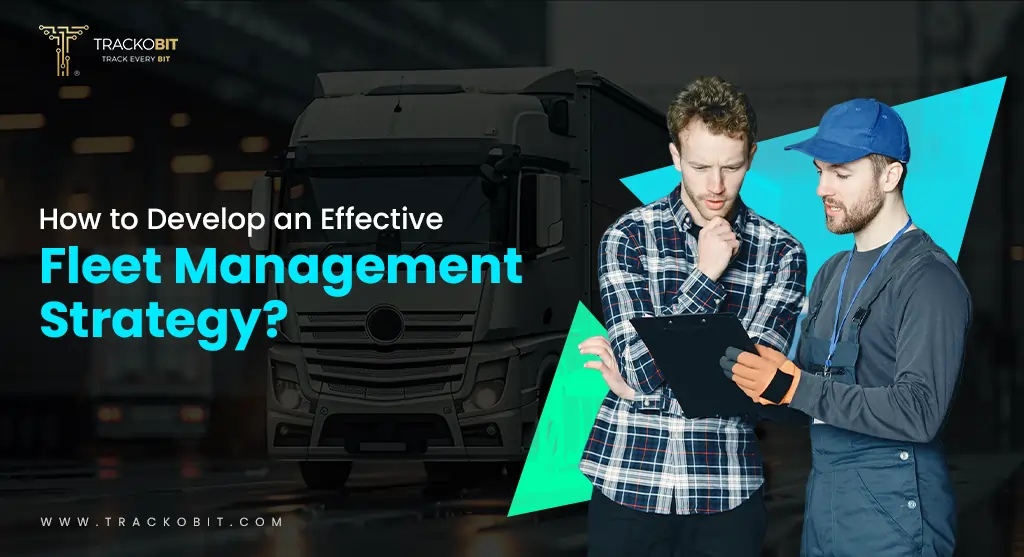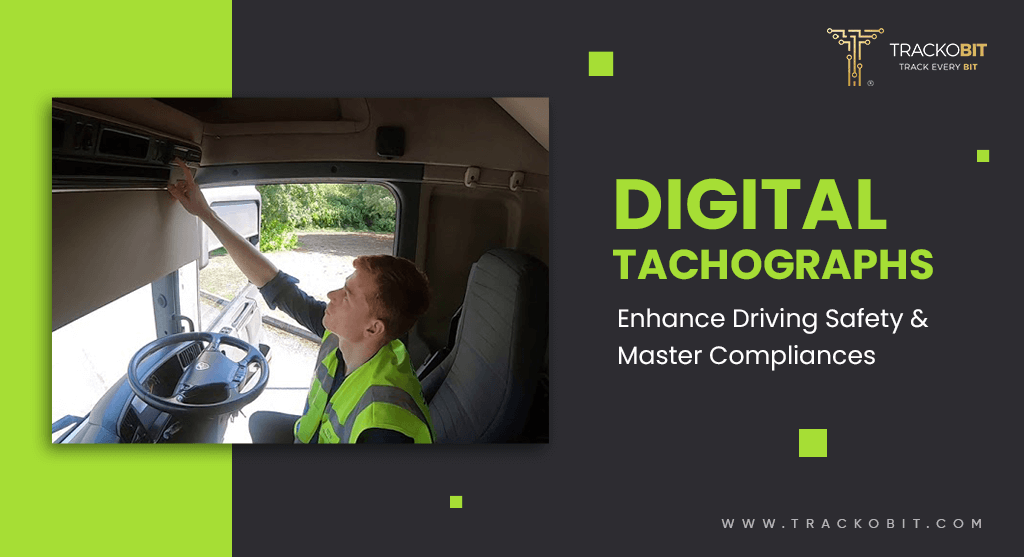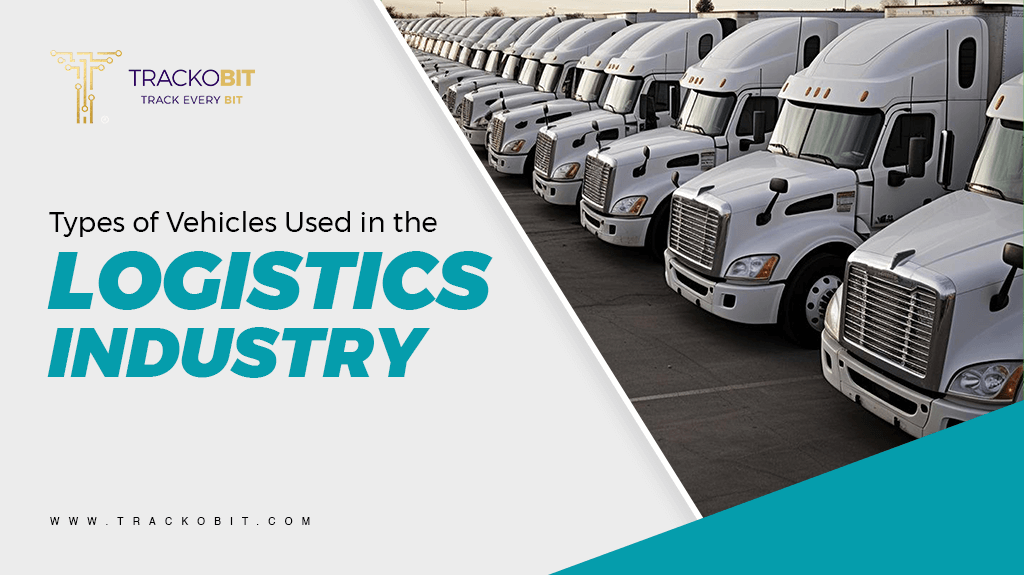-
TrackoBit
Manage commercial vehicles with the new-age Fleet Management Software
TrackoBit -
TrackoField
Streamline your scattered workforce with Field Force Management Software
TrackoField -
Features Resources
About Us
Get to know TrackoBit: our team, ethos, values, and vision.Careers
Join the most dynamic cult of coders, creatives and changemakers.Tech Support
Learn about our technical support team and services in detail.Events
Check out the exhibitions where we left our marks and conquered.
Contact Us
Connect with us and let us know how we can be of service.
How Fleet Managers are Using Telematics Software to Reduce Risk?
- Author:
- Read Time:8 min
- Published:
- Last Update: July 19, 2024
Categories
Table of Contents
ToggleCategories
- Fuel Management
- Route Optimisation
- Electric Vehicle
- Roster Management
- Vehicle Tracking
- TrackoMile Industries
- TrackoBit Industries
- More
- Sensor Integration
- Topical
- GPS Trackers and Hardware
- Tech and Beyond
- TrackoField
- What's New
- Employee Management
- Company
- Field Sales And Service
- Telematics
- TrackoBit
- Task and Workflow
- Miscellaneous
- GPS Software
- Lead Management
- Fleet Management
- Leave And Attendance
- Video telematics
- TrackoField Industries
- Route Planning
- TrackoMile
- Driver Behaviour
- Last Mile Delivery
- Asset Tracking
- Dispatch Management

Here we’re spilling details on how having vehicle telematics software helps extend a vehicle’s life span, improve fuel efficiency, and ensure its optimum utilisation. Just so you can add costs back to the revenue.
Table of Contents
Toggle
There are many risk profiles in the fleet management process. While running a fleet of delivery trucks, fleet managers are responsible for ensuring that vehicles are optimally utilised, and drivers are operating vehicles with good maintenance routines over planned routes.
All fleet managers would agree how badly they wish for no mid-route breakdown, extra miles, consignment theft, accidental risks, and delayed arrival times.
That’s the reason why managers have started switching to vehicle telematics software. These proven technologies provide proactive data about how the fleet is handled and driven. As a result, it helps managers take timely actions and build well-calculated strategies to mitigate operational challenges and risks.
We are unfolding how exactly modern vehicle telematics software helps reduce operational risks, up to what level. Before that, we will understand all the potential risks the fleet management process comes with.
What are the Risks of Managing a Fleet?
The Darkside
Managing a fleet comes with more risks than profits. But this happens only if you haven’t invested in proactive vehicle telematics technology. Here is what all they involve:
Risk 1 – High Maintenance Costs
Fleet operations are dicey when they are devoid of proper oversight, as a result, they end up incurring high and unpredictable maintenance expenses. This impacts the overall budget and profitability of transporting businesses.
Risk 2- Vehicle Misplacement or Accidental Risks
When managers don’t have virtual surveillance of their fleet, they are prone to increased risks of asset theft and accidental damage. This leads to the risk of lives, legal liabilities, and higher insurance costs.
Risk 3 – High Fuel and Operational Costs
Given how volatile fuel prices are, a lack of optimum route and trip planning for the fleet can lead to maximized fuel consumption and costs.
Risk 4 – Driver Safety and Retention
When operations aren’t well planned and governed through technologically advanced solutions, it’s hard to find drivers who aren’t honest about their tasks. Plus, due to a lack of technological upgrades, drivers feel unsafe at work and end up leaving. This makes it hard for fleet operators to retain or recruit drivers and operational staff.
Risk 5 – Vehicle Downtime Mid-route
When businesses lack visibility into the maintenance cycle of their operating fleet, they fail to predict its uptime. As a result, they experience inconvenient mid-route breakdowns, which cause them to incur large costs in repairing the broken-down vehicles. This eventually affects delivery schedules and impedes customer satisfaction.
And not to forget, the poor-conditioned fleet can cause some serious accidents and mishaps.
Risk 6 – Operational Inefficiencies from Undertilised Fleet
When you operate a fleet of 100+ vehicles, a few vehicles will be underutilised or maybe overutilised. This leads to increased costs for repair and upkeep.
Some more challenges:
- Still, businesses are not using enough technological solutions for better forecasting of fleet operations. Thereby, they stay clueless and participate in time-consuming and sometimes irrational processes to manage the fleet.
- Having no oversight of fleet operations results in poor compliance with HOS (hours-of-service) rules. This leads to long driving hours which calls for more accidents and vehicle wear down.
- Well, when fleet managers are not able to manage their vehicle’s time on the road or overutilization, they fail to adhere to meeting sustainability goals.
Managing these risks effectively requires a combination of strategic planning, investment in telematics technology, and continuous monitoring and improvement of fleet operations.
How Do Fleet Managers Mitigate Risks Using Fleet/Vehicle Telematics Solutions?
Here’s how bravado fleet managers mitigate or terminate risks, layer by layer with the help of intelligent vehicle telematics solutions.
Solution 1 – They Learn to Utilise Their Fleet Optimally
Upon accessing vehicle telematics solutions, managers review comprehensive data on each operating vehicle in their fleet. They can count each vehicle’s trips, which vehicles were parked stranded, and which ones experienced the most downtime.
It even gives a current view of vehicles running, idling, overspeeding, or stopping. This level of visibility helps managers make better decisions about how to use their fleet effectively. They can easily prevent vehicles from getting over or underutilised.

Solution 2 – They Get Better in Planning Efficient Routes
The best thing about telematics solutions is that they let managers systematically arrange trips, tours, and routes for each fleet. Using an intuitive interface, managers can assign trips to each vehicle, and compose a tour with waypoints and halting points (the delivery destinations).
They can pre-design and assign a safe and efficient route that could reduce their drivers’ time on the road and prevent unwanted fuel and maintenance costs.
But, not just that…
When you trust TrackoBit’s telematics data-driven route planning software, you get options to set multiple stops and even define the duration of these stops. On top of that, you can even sequence the stops as per the urgency or priority of the consignment. This reduces operational time and ensures deliveries are done on schedule.
Solution 3 – They Keep Better Oversight of Maintenance Needs
An efficient fleet manager is not the one who wins negotiations on maintenance contracts with body shops. Rather, it’s the one who monitors the routine maintenance cycle and makes every effort to reduce the vehicle’s frequent trips to the mechanic.
Managers with telematics systems enjoy reduced maintenance needs as they easily set up reminders for maintenance or servicing. Plus, they enjoy reduced vehicle breakdown mid-route by letting their drivers access eDVIR in their drivers’ app. It’s like a proactive way for drivers to digitally fill in the issue of vehicles (if any), before or after the trip. Minute leakage, fluctuation in engine performance, and clutch issues when reported on time lead to two things:
- One, it gives time to treat them before any unwanted downtime calls in.
- Two, it protects drivers from getting blamed for such issues (when they are not at fault).
Solution 4 – They Oversee Drivers’ Activity
Fleet managers have access to a comprehensive suite of driver monitoring systems through an analytical dashboard of video-based vehicle telematics software. These systems help review drivers’ in-cabin activities and overall attentiveness. The system captures and stores visual recordings and screenshots whenever it detects drivers who are distracted, drowsy, smoking, not wearing a seatbelt, or leaving the cabin for long hours.
Such non-compliant visual evidence can be used by managers to coach or exempt drivers from further tasks.

Solution 5 – They Gauge Events to Prevent On-road Mishaps
The vehicle telematics software helps record every driving event that’s outright risky for the driver, pedestrian, and engine’s health. The system with advanced driver behaviour monitoring solution suite lets managers timely check over their fleet to ascertain when and which one is:
- Putting harsh acceleration, taking sharp turns.
- Freewheeling for longer than a beat length of 10 to 20 m.
- Jumping lights or violating traffic rules.
- On the cusp of collisions or have literally experienced one.
It traces every event that’s important to govern before it becomes fatal.
Solution 6 – They Get to Reduce Insurance Costs
When the fleet is monitored well in a proctored environment and every unsafe driving event is visually reported through dashcams-supported telematics software, managers can get past the tough cross-questioning from the insurance teams. In fact, insurance providers price their premiums less for fleets that operate with less risky driving profiles and have AI dashcams attached to their vehicles.
Such detailed monitoring prevents engine failures, risks of accidents, and costs of repairing the vehicles.
And moreover, this visual data collection through telematics systems even helps reconstruct accidents. It provides clear evidence of who was at fault, which prevents unnecessary road rage and the scope of litigation (if things escalate).
Solution 7 – Asset Tracking for Theft Prevention
Telematics systems help with the real-time geospatial data of in-transit assets in multi-modal journeys. This is very helpful in preventing or recovering stolen assets. Whether you are moving valuable consignments, high-value construction machines, or shipment containers, the system provides near-to-the-minute locational updates. It even provides alerts when navigation around planned routes or marked geofence is violated.
TrackoBit’s asset monitoring systems provide a suite of vehicle safety features inclusive of SOS alarms, battery disconnect alarms, remote engine immobilisation, and parking mode alarms. These features are easy to enable and disable from mobile applications, protecting managers from financial risks.
Solution 8 – Better Cost Analysis & Management
Telematics software tracks fuel consumption patterns through every turn and twist. It detects how much fuel is consumed across travelled mileage, which elongated routes caused excessive consumption along with how much fuel was consumed during empty miles. Not just that, it even decodes the total expense you incur when purchasing fuel, helping you retrospect and fix routes and idling trends that cause more costs.
Since the system comes with an efficient fleet maintenance scheduler, you can better comprehend how often or how much you spend excessively on vehicle repair and upkeep. If the visits are frequent, it looks like drivers poorly operate your fleet.
Solution 9 – Measurable Data for Better Future Decisions
Analytical dashboards and visual reports are the heart and soul of telematics systems. With a few taps, you can review each fleet’s fuel patterns, route itinerary, driver analytics, driving patterns and so much more. Having such detailed and intricate data around every smallest to biggest operational event helps act fast and make decisions that your future self will thank you for.
You can use this data for benchmarking and performance tracking. Measuring outputs with the set benchmark can help ensure you are running a compliant and safe fleet.
TrackoBit’s analytical dashboard hosts you with 200+ reports across every operational event, all laced with accurate, self-updating, aesthetically presented trip’s current and past 12 months data.

Parting Words!
Vehicle telematics protects and positively impacts drivers, administrative staff, aka fleet managers, and every stakeholder involved in the fleet management process. The breakthrough technology looks after every loose end that leads to risky fleet operations. With vehicle telematics software, you can foresee every operational inconsistency that’s leading to more driving hours, excessive fuel consumption, erratic driver behaviour, and frequent service and maintenance costs.
With one technological platform, you can gauge important metrics and improve them before they become massive operational and financial risks. Thinking of adopting or switching to an every-advancing vehicle telematics solution suite? Watch TrackoBit live in action and see results for yourself in the first quarter itself.
Intrigued? How do you feel about getting a free demo?
Trending Reads:
- How Fleet Management Solutions Cater to Emergency Services
- Cost of Fleet Management – Analysis with Actual Numbers
- 4 Super Efficient Ways to Reduce Engine Idling
FAQs on How Telematics Solutions Help Reduce Operational Risks
-
How is telematics used in fleet management?
The vehicle telematics software provides real-time vehicular and overall operational data that helps govern and manage the fleet better. Live or timely insights like the fleet’s current location, driver behaviour, driving patterns, fuel consumption, trip efficiency, drivers’ data, and maintenance needs help run a well-managed and efficient commercial fleet. All in all, it provides timely updates on inconsistencies regarding engine health and fleet performance, which helps take action to avoid business downtime.
-
How do vehicle telematics mitigate risks?
Telematics software provides real-time operational data of transit vehicles. It conveys the vehicle’s current location, travelled routes, engine maintenance needs, driver behaviour, and overall driving and fuel consumption patterns. It portrays every data that is important to gauge inconsistencies in fleet operations to prevent operational or financial risks eventually.
-
What is the exact function of telematics?
Telematics is a process in which vehicles and assets’ locational movements are transferred from onboard diagnostics (OBD) over a computerised map of telematics systems through GPS.
Nandita Gupta
Nandita, a digital content lead at TrackoBit, leverages 8+ years of expertise in crafting compelling B2B and B2C content. She specializes in delivering well-researched, solution-focused strategies and writeups for SaaS products in telematics, geospatial tracking, AI, and IoT. When she’s not strategizing, writing, or leading her team, you’ll likely find her diving into new reads, exploring trending topics, or hitting the gym.
Related Blog Test
-

Tips to Build a Solid Fleet Management Strategy (Beware! It Works)
Nandita Gupta 29 August 2024Running a fleet without strategizing? You are doing it all wrong. Here, note down just 9 ways to form a spectacular fleet management strategy.
-

What is a Digital Tachograph? History, How to Use It & Alternatives
Anvesha Pandey 23 August 2024Read a lot of pieces around digital tachographs? Still not clear with what exactly is this? This piece is for you as it unfolds everything about tachographs.
-

What are DTC Codes? Types & How to Decode Them
Tithi Agarwal 20 August 2024Do you see a blinking check engine light but don’t know what it means or the reason? In this blog, we will learn why deciphering DTC codes is crucial for identifying the issue.
-

Types of Vehicles Used in the Logistics Industry
Nandita Gupta 16 August 2024There are almost 5 types of vehicles used in the logistics industry and you are using just one kind? Explore all the types of trucks and multimodal transportation used to ensure on-time dispatch and delivery of goods.
Thank you for reaching out! We'll speak to you soon.
In the meantime, why not find out more about us, explore our products, or visit our blog?
Stay Updated on tech, telematics and mobility. Don't miss out on the latest in the industry.
Cookie Consent
We use cookies to enhance and personalize your browsing experience. By continuing to use our website, you agree to our Privacy Policy.






























